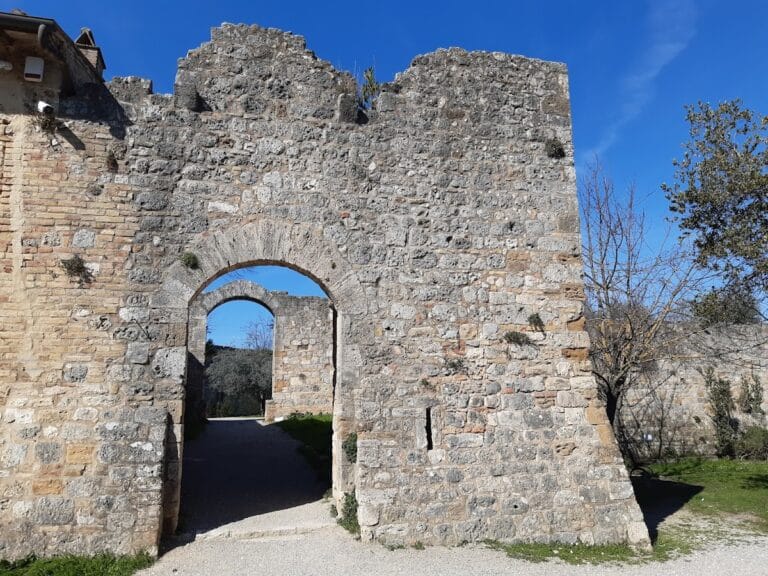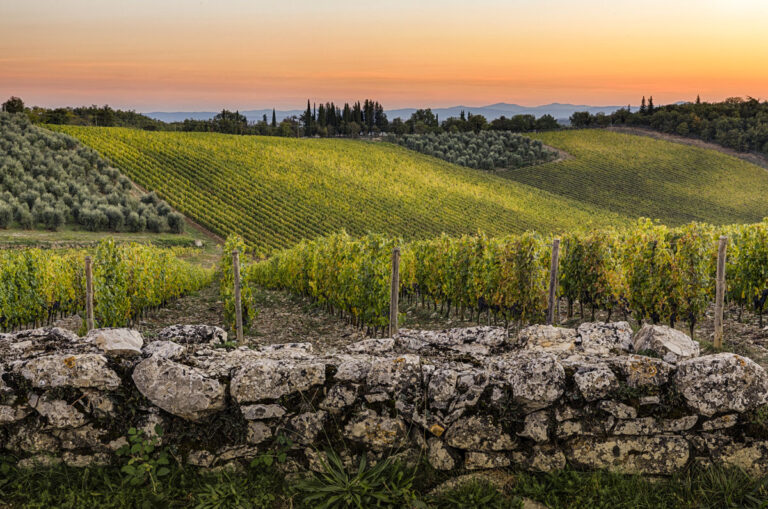Castello di Strozzavolpe: A Medieval Fortress and Noble Residence near Poggibonsi, Italy
Visitor Information
Google Rating: 4.2
Popularity: Low
Google Maps: View on Google Maps
Country: Italy
Civilization: Unclassified
Remains: Military
History
The Castello di Strozzavolpe is located near the town of Poggibonsi in Italy. It was established in the early 11th century by Benuccio da Salimbeni on a hill close to Luco, positioned strategically at the junction of two important medieval routes, the Via Cassia and the Via Francigena. This location allowed the castle to serve both defensive and control functions within the region.
The first official record of the castle dates from 1154, when documents from the nearby Abbadia a Isola monastery list it as belonging to the feudal lord Guido Guerra II. During this time, vassals known as the Scoriavolpe managed the estate. Earlier, Guido Guerra I is credited with strengthening the fortress and building an underground passage connecting it to Poggio Marturi, indicating the castle’s importance in local military and communication networks.
In 1240, the central structure was fortified further by enclosing it with a wall topped by battlements and surrounding it with a moat filled with stagnant rainwater. Entry was only possible via a drawbridge, enhancing its defensive capabilities. This medieval layout, characterized by an irregular shape, is largely maintained to the present day.
The castle’s military significance continued into the early 14th century. In 1313, Henry VII of Luxembourg captured the fortress and used it as a base for campaigns against the countryside around Siena. Later in the century, ownership passed to the Adimari family from Florence, who transformed the stronghold into a more domestic residence. The castle was restructured into a manor featuring two floors connected by an internal staircase. The upper floor was designed as the women’s quarters, separated from the ground floor, which held common rooms and an armory.
The Castel di Strozzavolpe endured a notable siege in 1479 amid conflicts involving the Duke of Calabria. Despite attempts to capture it, the fortress remained intact. This event was commemorated in a painting created in 1480, now kept in Siena’s Palazzo Comunale. Over the following centuries, the castle changed hands among several noble families. The Rinuccini family acquired it in 1590 and added a chapel beneath the east tower. After the instability of this tower led to its demolition in 1722 by the Ricciardi family, the castle passed to the Franceschi in 1730 and then to the Da Cepparello family in 1777, who hired architect De Fabbris to install a large staircase made of pietra serena, a fine local stone.
The late 19th century saw significant restoration work after the castle’s roof collapsed under heavy snow. Alessandro Bizzarri oversaw these repairs, which included raising the height of the central building and entrance tower, reintegrating original battlements into the new outer walls, constructing a balcony with a loggia, and draining the moat. These changes preserved much of the medieval character while adapting the structure for continued use.
During World War II, the castle served as a military command post. This period led to the dispersal of its extensive collection of armor, which has since been gathered and is now displayed in one of the castle’s rooms dedicated to armaments. Today, the Banchi-Arcangeli family owns the castle, which still houses this collection of ancient weapons accessible to interested visitors by appointment.
Remains
The Castello di Strozzavolpe retains much of its original medieval defensive design, prominently positioned on a hill. The central structure, irregular in shape as it was adapted to the landscape, is enclosed by crenellated stone walls that once stood above a moat. This moat was originally filled with stagnant rainwater and could be crossed only by a wooden drawbridge leading to the entrance portal. Such features highlight the castle’s role as a military bastion in its early centuries.
While the east tower, once a significant part of the complex, was demolished in 1722 due to structural concerns, the central palace now sits on the site where the original keep once stood. Although the original fortress tower no longer survives, its position defines the castle’s core layout. Inside, the manor is arranged over two floors connected by an internal staircase. The upper level was reserved as living quarters for women, maintaining separation from the ground floor, which contained communal spaces including the armory and dining areas.
A notable architectural addition from the late 18th century is a grand staircase made of pietra serena, a traditional Tuscan sandstone, designed by architect De Fabbris. This feature reflects the castle’s transition from a purely military fortress to a noble residence.
Restoration work in the 19th century integrated original stone battlements back into the outer walls, which were raised to enhance the castle’s visual and structural presence. A balcony with an adjoining loggia was added during this period, providing a sheltered outdoor space. The moat was drained at this time, marking a shift from defense toward residential use. Access to the castle remains via a distinctive approach lined with cypress trees, including a stepped ramp and the wooden drawbridge crossing the former moat.
Around the perimeter walls, service buildings constructed with underground passages remain in place. These tunnels likely served logistical or defensive purposes, allowing discreet movement between different parts of the compound.
Within the farm buildings adjacent to the castle, a family coat of arms is carved into the stone of a fireplace. This emblem features two horizontal stripes in yellow and blue, symbolizing the lineage of one of the families associated with the fortress.
Finally, the castle preserves a collection of ancient weapons displayed in the armory room. This assortment, gathered over centuries but scattered during World War II, has been reunited and is available for viewing by visitors who arrange their visits in advance. The assemblage offers a tangible connection to the castle’s martial past.










